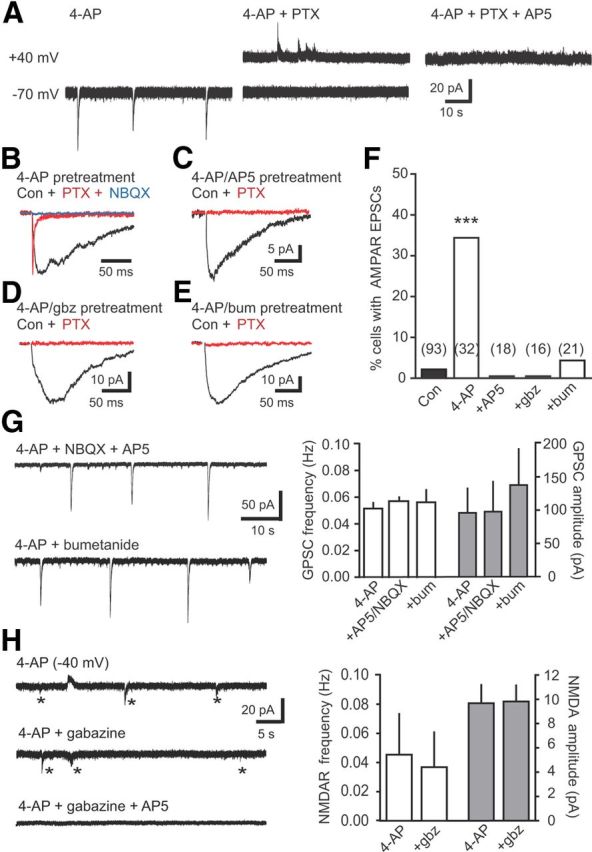Figure 4.

GABA depolarization is required for initial synapse unsilencing by synaptic activity. A, 4-AP (100 μm) induced rhythmic GABAR activation blocked by PTX in newborn GCs held at −70 mV. Subsequent depolarization to +40 mV revealed NMDAR EPSCs blocked by AP5 (50 μm). B, Example synaptic currents in a newborn GC after washout of 4-AP after 2 h incubation. Addition of PTX revealed an AMPAR EPSC (red; normalized to peak of GPSC) that was blocked by NBQX (10 μm; blue). C–E, Examples of synaptic currents in newborn GCs after incubation in 4-AP plus AP5 (50 μm; C), 4-AP plus gabazine (5 μm; D), or 4-AP plus bumetanide (10 μm; E). F, Summary of the percentage of newborn GCs with AMPAR EPSCs in control ASCF (black) or after 4-AP incubation with inclusion of the indicated antagonists (white). The number of cells tested is shown in parentheses. ***p < 0.001, χ2 test, compared with control. G, Left, Examples of rhythmic GABA release induced by 4-AP in the presence of blockers that prevent AMPAR incorporation. Right, The NKCC1 antagonist bumetanide (10 μm; n = 4) and the NMDAR and AMPAR antagonists AP5/NBQX (50 and 5 μm, respectively; n = 4) did not alter the frequency and amplitude of rhythmic GABAR PSCs (ANOVA). H, Left, Example of NMDAR-mediated EPSCs (asterisks) in a newborn GC held near the GABA reversal potential (small GPSCs are outward) in the indicated conditions. Right, Gabazine did not alter the frequency or amplitude of NMDAR EPSCs (n = 4, paired t test). bum, Bumetanide; Con, control; gbz, gabazine.
